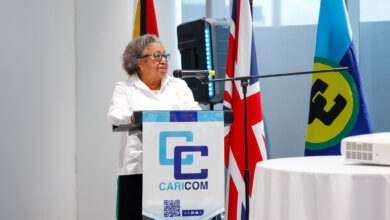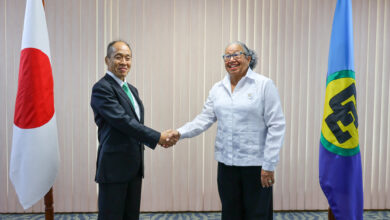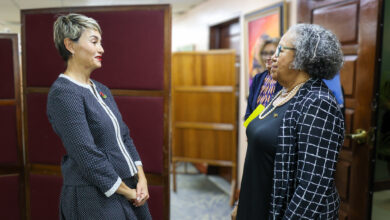Petre Williams-Raynor, Contributing Editor
WITH THE Green Climate Fund (GCF) set to come on stream next year and a recent infusion of capital into the Adaptation Fund (AF), developing countries have a better shot at preparing for climate-change impacts.
But it is an opportunity they will have to ready themselves to take full advantage of.
“They should have started already, thinking about what they would need funding for, which is not difficult. But you need to have your institutions in place,” said Clifford Mahlung, capacity building coordinator for the Alliance of Small Island States, at the Lima Climate Talks last week.
He noted that Jamaica, for example, is ideally placed to tap into funds to be made available under the GCF, beginning next year.
Australia pledge
Last week, a US$166-million pledge from Australia pushed the sum in the GCF's coffers to more than US$10 billion – some five years after it was established at the 2009 Copenhagen Talks.
“We have a lot of vulnerable communities, vulnerable sectors in Jamaica that we have identified from the national communication (to the United Nations Framework Convention on Climate Change) and really need support to make them resilient,” said Mahlung, who has been nominated as the Group of Latin America and the Caribbean representative on the Adaptation Committee for another two years.
“We (in Jamaica also) have a Climate Change Division, which is leaps ahead of some of the other countries who still attach climate change as part of their environment ministry or meteorological office,” he added.
The former chief climate negotiator for Jamaica has, therefore, encouraged other countries to follow suit, noting that those who already have a designated national implementing entity (NIE) under the AF, for example, would stand a better chance of readily tapping into the GCF.
This is so as the GCF has agreed to fast-track the accreditation of such NIEs – which had to meet stringent standards in order to qualify to manage projects under the AF – under the new fund.
The German government's contribution of €50 million to the AF – hard-hit by the downturn in the carbon market on which it is reliant for financing through the Clean Development Mechanism — is another plus for developing countries.
“That [sum] put us only US$19 million away from our fundraising target [of US$80 million] for this year,” said Marcia Levaggi, manager of the AF Board Secretariat.
“This money allows us to fund almost all the projects we have in the pipeline … [specifically] Ghana, Mali and Nepal. There is one more for Indonesia for which we don't have enough money, but we are confident that, by the end of this year, we may get enough money to clear the pipeline,” she added.
Fully operational since 2010, the AF was the first to grant developing countries direct access to financing for climate change, with Jamaica among the earliest beneficiaries.
Since then, it has allocated US$232 million to help 40 countries adapt to climate change, which threatens, among other things, more extreme weather events and increased global temperatures. This is along with associated health and economic problems that could devastate entire populations.
Sign of things to come
Meanwhile, Levaggi said the AF, despite the existence of the GCF, would continue to fundraise.
“The plans are to keep the contacts with donors, trying to sensitise them, and also our recipient countries, many of [whom] have been vocal … advocating for more resources to the AF,” she said.
At the same time, Levaggi hinted that the German donation – the largest ever to be received by the AF – was a sign of good things to come.
“This year, obviously, was difficult because the GCF attracts a lot of attention, but still, the fact that we have managed to get such a big amount of money for the AF … we are very proud of this and are very grateful to the government of Germany,” she said.






